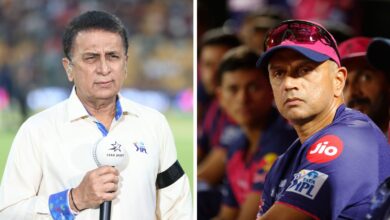T20 world cup final: Hory beckons South Africa, India wish to erase recent hory to lift a world cup | Cricket News

If you weigh the strengths and weaknesses of the T20 World Cup finals, India and South Africa, the pendulum of the scale would strike the perfect balance, the two pans dangling from equal heights, like the statue of Lady Justice. It’s poetically and sportingly fair that the two unbeaten sides of the tournament are in the final too, two teams with identical flaws and powers, two teams with a left-arm wr spinner, and two teams longing to lay their hands on an ICC silverware. India, have not translated their wealth in talent and treasury to trophies since the 2011 50-over World Cup triumph; South Africa’s waves of wondrously gifted cricketers have contrived to slip glory through their palms. The proverbial carpe diem is winking from the Bridgetown skies.
The most fascinating is the coming together of two generational fast bowlers, Kagiso Rabada and Jasprit Burmah, the collision of the most natural bowling action and the most unnatural one in the modern game, of athletic grace and outlandish explosiveness. The South African has been quietly influencing games, like a whispering breeze, his music more classical than reggae. Though Rabada is not counted among the modern greats of this version, he has the tools to torment the best of batsmen in this format too. The leg-cutter, the nip-backer with which he stunned the Afghanis, and the change-up accounting for 80 percent of his slower balls, is a thing of dilled beauty.
Horically he has been profligate in T20Is, a product of aggression, he had once said, but this tournament, he has been miserly, offering only 5.88 runs an over. But putting brakes on run-scoring has seldom been his priority. He would be happier if he could prise out the rampaging Rohit Sharma, which he has four times in 15 meetings in T20Is, picking his scalp once every 19 balls. Sharma has managed to score 90 runs off 76 balls at a strike rate of 118.42. Rabada would rather skittle his wicket than keep him shut, adding to his already splendid tally of 12 wickets.
India’s Jasprit Bumrah celebrates the dismissal of Afghanan’s Najibullah Zadran during the ICC Men’s T20 World Cup cricket match between Afghanan and India at Kensington Oval in Bridgetown, Barbados, Thursday, June 20, 2024. AP/PTI
So would Bumrah when he lines up against his former Mumbai Indians teammate Quinton de Kock. But across 13 innings across formats, he has devoured him five times, striking once every 30 balls. De Kock rates him “as good as Dale Steyn”, and his influence in this tournament has been like pomp Steyn. An economy rate of 4.12, striking once every 11th ball for his 13 wickets, bowling like raging wind, pinching wickets in critical junctures. If India were to ho the trophy, it would have his name engraved in bold. He has been the true architect.
It’s fitting that they would demonstrate their range in the cradle of West Indies fast bowling, tearing up from ends named after two of the finest the island nation Barbados has produced, Malcolm Marshall and Joel Garner. There are others too, like Wes Hall and Charlie Griffith, the pair before the quartet, Sylvester Clarke and Franklyn Stephenson, the unfortunate duo, reduced to side-acts in the glut of fast bowling talent, unsung just like Arshdeep Singh and Anrich Nortje, the highest wicket-takers of their respective nations. The left-hander has coaxed the tiniest hint of help from the surface, swinging and seaming the ball both ways with the new ball, reverse swinging the ball in New York, and impacting at the death with his slower-ball off-cutter.
The virtues of Nortje are different. As his strapping frame suggests, he is a deck-the-best beast with the heaviest of heavy balls. Add blinding pace—he has been the quickest among the lot—and subtle alteration of length, he would not be as simple for Suryakumar Yadav to pick off as Chris Jordan or Reece Topley. Especially if there is the barest tinge of uneven bounce. The ever-bettering Marco Jansen and Hardik Pandya, two cleanest strikers of the ball too, complete the pace quorum. Both have a left-arm wr spinner and orthodox left-arm spinner to bolster the spinner ranks, though Ravindra Jadeja furnishes India an extra skin of depth and experience. South Africa, though, could summon part-timer Aiden Markram.
India’s Virat Kohli watches the ball after playing a shot during the ICC Men’s T20 World Cup second semifinal cricket match between England and India at the Guyana National Stadium in Providence, Guyana, Thursday, June 27, 2024. AP/PTI(
How they would wish their batting line-up were as flawless. The form of Virat Kohli gnaws India most, just as Reeza Hendricks’ touch worries the Proteas. Kohli has selflessly approached the bust-or-boom team tactic, but a meagre haul of 75 runs would froth uneasily in his mind, but Kohli is a seen-it-all cricketer with a preternatural sense of occasion. There wouldn’t be a better time to rediscover the runs. Hendricks, on the other hand, tucked in form-boosting runs against Afghanan on a wicked decks.
In an indifferent tournament for batsmen in general, runs have come from different directions. If Quinton de Kock has donned the lead role, like Rohit Sharma, Suryakumar Yadav has chimed in with valuable and entertaining runs. David Miller has sporadically shone for Markram’s men, even though the captain himself would seek an upturn of fortunes at No 3. India’s opposite number, Rishabh Pant, too has experienced form fluctuations, veering between the outrageous and ordinary. Both, though, possess middle and lower-order ballics to define games. Only one batsman in either set has crossed 200 runs (Sharma at 248), but collectivism is the buzzword.
Where they differ is their batting philosophy. India has adopted a postmodern flashing gun method. As a result only five half-centuries were raised, but three batsmen commanded a strike rate of 149 or more. Only De Kock has a corresponding number anywhere in this region (143). Theirs have been more traditional, and relative to circumstances.
Fuelling them would be the burden of hory. South Africa have never played a final, cruelly denied the entry a combination of wretched rules and a knack to combust, leaving unhealed scars in the nation’s cricketing psyche. In the same vein, India have contrived to freeze when at the final hurdle, or the one before. The skeletons laugh from the cupboard of the past. In the last 10 years, they have stumbled in the finals four times, and in the semifinals thrice. The never-been-in-final team meets the final fumblers. Proteas look to etch hory, and India to kick the butt of a bad habit.
Thus, in their perfections and imperfections, the match-up has a splendorous symmetry, though it does not necessarily imply that Saturday night’s game would be a perfect script. And the scales at the end of the game would inevitably tilt to one side.
Get latest updates on T20 World Cup along with live score updates for all matches.





